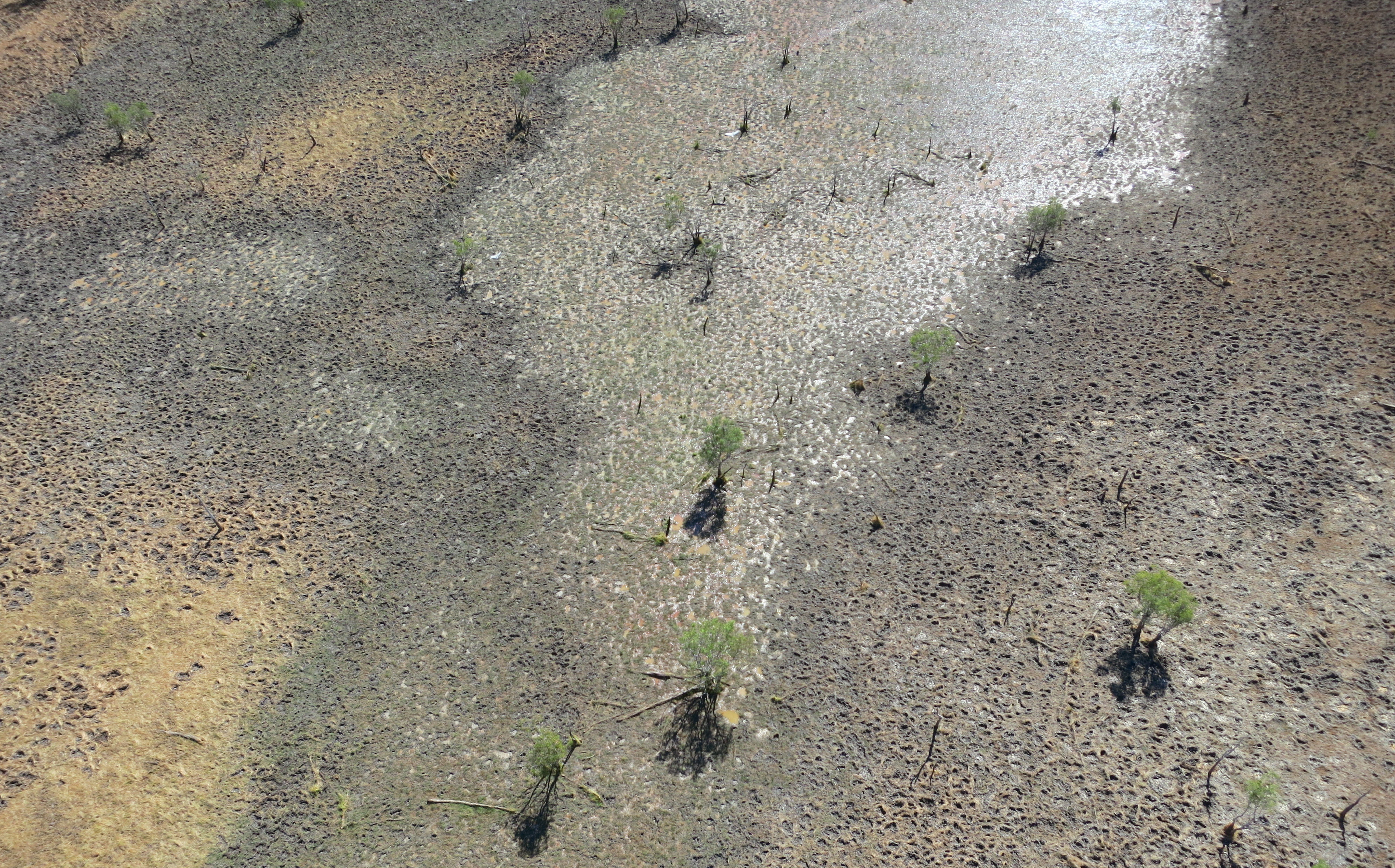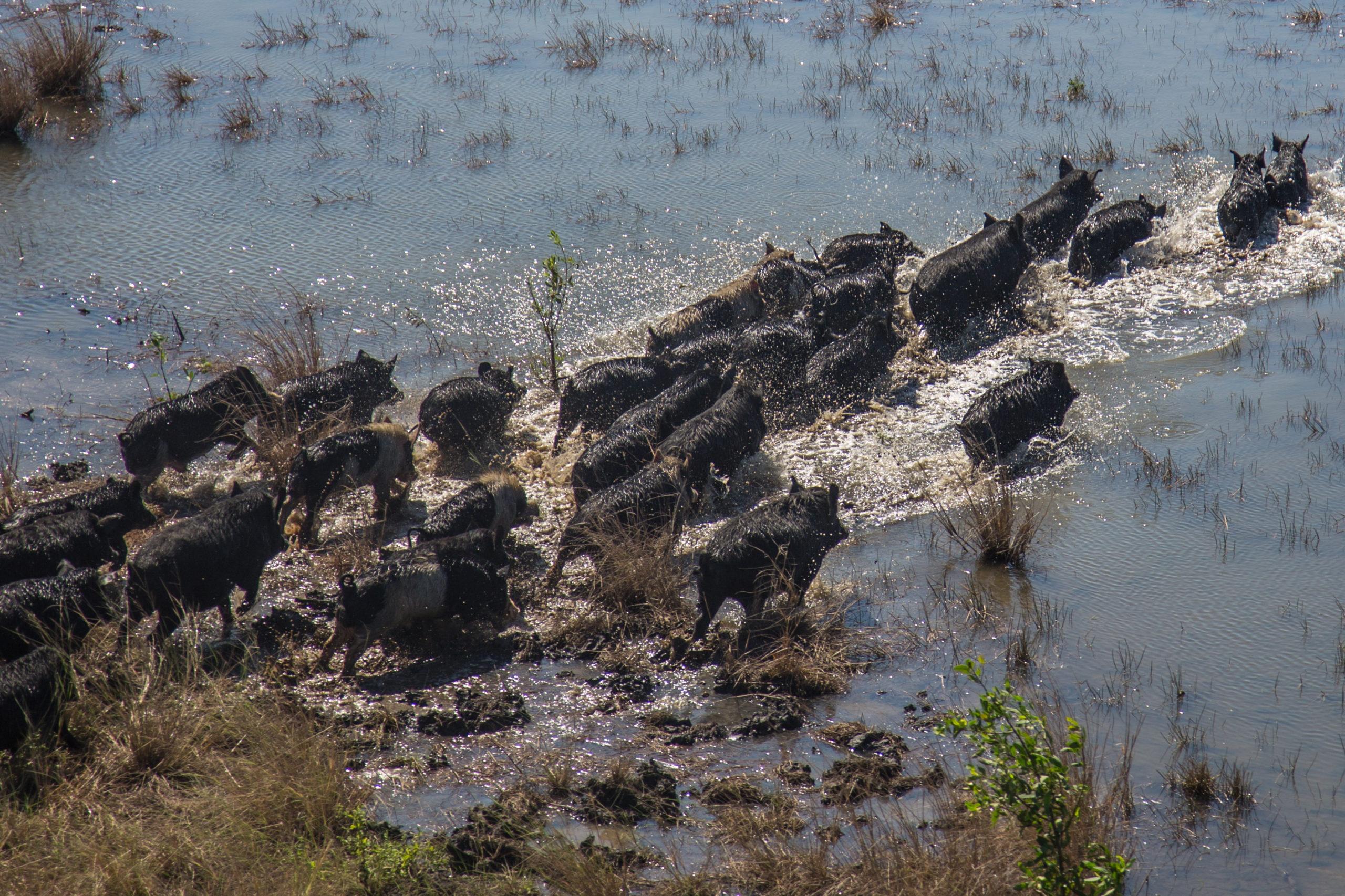Feral animals are a major threat to the ecological and economic values of northern Australia.
Feral pigs, cattle, horses and buffalo wreak havoc on the natural environment, displace native species and threaten agricultural production. They also damage traditional food and cultural resources such as turtles, water lilies and crocodile eggs.
This research is exploring how to best monitor and understand the damage caused by feral pigs to waterholes and how to best manage feral pigs to achieve management goals. This analyses and information is allowing Indigenous communities to weigh up their desire to retain feral animals as a resource, against the harm ferals cause to values that are important to the community, and to target management to priorities.

Feral pig damage in an Archer River wetland. Photo by Justin Perry.
In particular researchers are working closely with Aak Puul Ngangtam (APN, a registered charity entirely owned by Traditional Owners of the Southern Wik Homelands) to help APN plan, implement, monitor and report feral animal management activities, leading to better protection of key environmental assets. APN is using feral pig distribution data collected via methods developed by Hub researchers, and analysed and summarised by Hub researchers, to develop and refine their annual feral animal program which is leading to improved management and community outcomes.
Following a collaborative review of 2017 feral animal control data by APN and the project leader, APN decided to conduct a wet season survey to better understand seasonal resource use and pig distribution. Using a specifically designed iPad application, the survey data were immediately provided to APN allowing streamlined access to robust data for analyses and straightforward reporting to activity funders such as the Nest To Ocean program and the Queensland Land and Sea Ranger program who provide critical support for the APN ranger program.

Protecting turtle nests from feral pigs on Cape York. Photo by Gina Barnett.
Also as a result of the review APN decided to focus their management efforts along coast adjacent to marine turtle nesting areas. This call was made to achieve the biggest impact possible from a limited aerial control budget. This and other associated changes by APN in feral animal management has maintained the 90% reduction in predation of three threatened marine turtles (Olive Ridley, Flatback and Hawksbill) on 48km of beach in the APN management area. This massive reduction was achieved by a six-year collaborative effort, which has grown in scale and detail and now involves three initiatives working together to improve feral animal management in the APN area, across northern Australia and beyond (Figure 1).

Figure 1. How the NESP Northern Hub project links with two other feral animal initiatives to achieve outcomes in the APN management area in Cape York and beyond. A PDF version of this figure is available here.
The cultural values work undertaken by the project team and facilitated by APN has supported a senior Traditional Owner and her family to visit homelands along the Archer River. This provided a unique opportunity to record information on contemporary and historic environmental and cultural values and how feral animals have impacted these. Discussions generated important information and insights about how different values could be protected, as well as identified trade-offs between competing values. Two more field trips are planned in June 2018 to facilitate three of Aurukun’s most senior Traditional Owners to return to their homelands in the most difficult to access part of the Wik area.
NESP team members will participate in the visit which will be the first time in over two years that the elders have been able to access their traditional lands. This generation of elders are the last generation that spent their childhood living on country and their input into the future management of this region and the clarification of succession planning for future generations is essential for the long-term conservation of this important environmental and cultural asset.
Hub researchers are now developing a framework to transfer the approach used with APN to other areas in northern Australia through identifying robust environmental and culturally-relevant metrics and an associated reporting system.

Feral pigs can be responsible for extensive damage to wetlands. Photo by Michael Lawrence-Taylor.
Research outputs
Factsheet
Project webpage
Media
Attributions